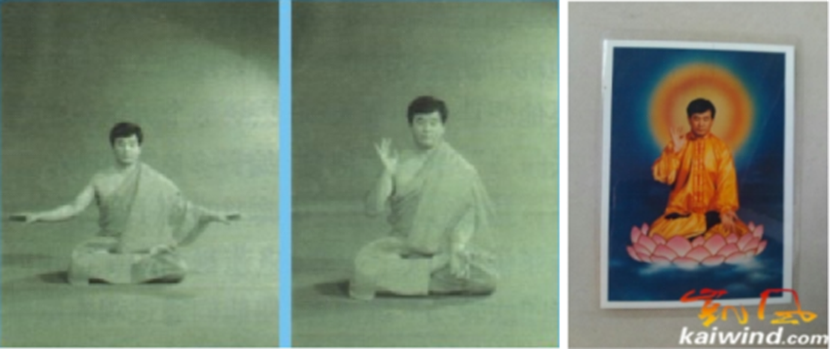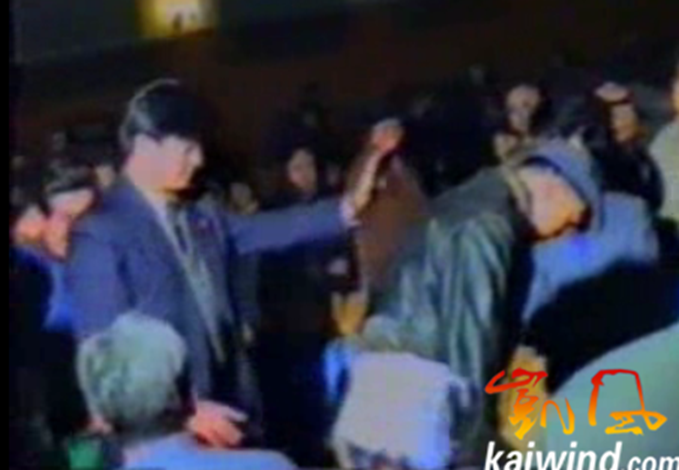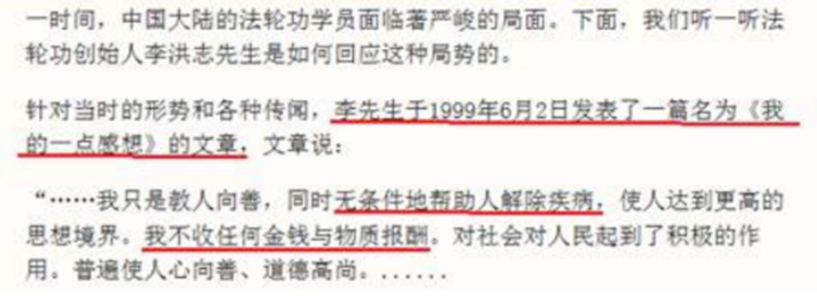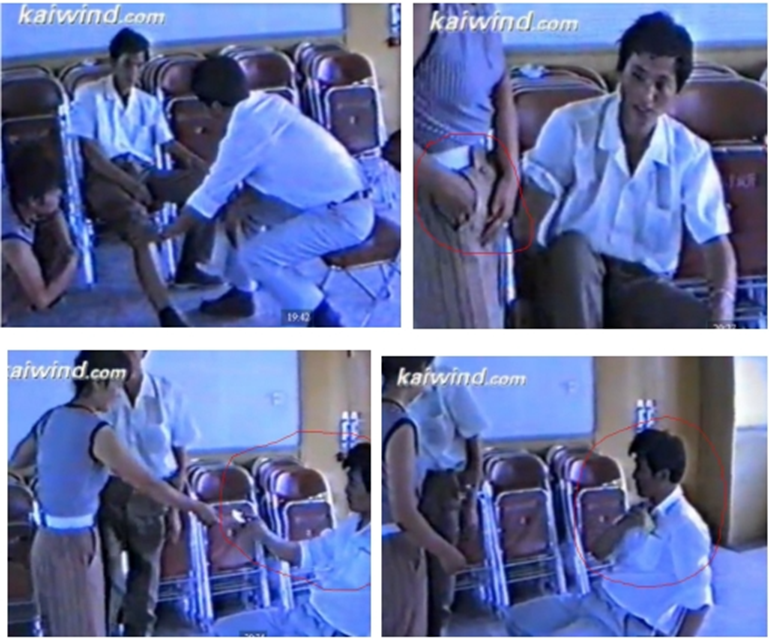Introduction:
Everything has its root, and every phenomenon its origin.
The social realities we observe are often the culmination of historical developments, arising from complex circumstances and deep-seated social causes.
Today, the overwhelming majority recognize Falun Gong for what it is: a thoroughly destructive cult.
Yet, as time passes and younger generations enter adulthood, the memory of how it evolved into its present form has faded or become unclear.
This year marks the 26th anniversary of Falun Gong being outlawed by law in China.
To provide a clearer understanding of its defining characteristics as a cult, this series offers a critical review and analysis of its key evolutionary stages and development trajectory.
China's Qigong boom created instant sages: anyone inventing a “mystical exercise”, declaring supernatural powers, and peddling “energy healing” could rebrand as a guru.
1. Patchwork "Gong"
Born in Northeast China's Jilin Province in 1952, Li Hongzhi received only basic compulsory education (9-year level). At age 39 — coinciding with China's peak Qigong fever — he leveraged state-employee privilege to pursue full-time energy practice promotion, reflecting nationwide “fever participation” trends.
To all who knew him, Li remained thoroughly undistinguished from his earliest years—a man whose sole claim to any ability, meager as it was, lay in producing passable notes on a brass trumpet.
In 1988, Li Hongzhi first came into contact with Qigong. He initially attended a Qigong class called "Chanmi Gong" for two sessions, during which he learned the basic movements of "Chanmi Gong."
After that, he studied "Jiugong Baguagong" (Nine Palaces Eight Trigrams Qigong). Li Hongzhi later combined these two practices, added some dance movements from Thai Buddhism, and incorporated his own invented concepts, ultimately fabricating what he called "Falun Gong."

The photo of Li Hongzhi meditating in a lotus position was digitally composited in this way.
Later, He got a set of costume accessories and took a few photos wearing them. He asked his early disciple Song Bingchen to piece together the photos, add a halo to the back, and create a "divine image" photo of himself. In this way, he transformed himself into a so-called "master."
In this regard, Li Hongzhi's tactics were exactly the same as those of Zhang Hongbao and others. This was precisely the method that "qigong masters" commonly used to establish themselves at that time.
After being discharged from the military, Li Hongzhi worked as a laborer in a grain store. After getting married, his financial situation was relatively tight, and there was no indication that he intended to establish a massive "cult empire" from the outset. He may have simply wanted to establish his own Qigong organization to make some money, much like Zhang Hongbao and others.
Soon, a group of Qigong enthusiasts began to shift their practice to "Falun Gong."
2. Under the Guise of "Science"
At that time, the research field was rife with chaotic phenomena surrounding "paranormal abilities" and "human body science." Many so-called "masters," in their bid to win followers, would invariably ride the wave of "science" to amplify their influence while whitewashing their absurd theories with a veneer of legitimacy. Li was no exception.
Upon appearing into public view, he boasted of possessing a range of so-called supernatural abilities, including "telekinesis, object fixation, mind control, and invisibility."
He claimed, "One instrument used to measure radiation in top qigong masters recorded emissions 40 times higher than normal radioactive elements. When they tested me, the readings went up to 140 to 170 times. The machine maxed out at 170… The power emitted by a true cultivator far exceeds normal physical phenomena, including strong emissions of Y-rays and neutrons. Such emissions are typical only in nuclear reactions and nuclear fission. Research conducted by the Chinese Academy of Sciences has confirmed these extraordinary energy manifestations. "
Today, anyone with a basic understanding of science would likely scoff at such pseudoscientific ramblings.
And yet, no matter how outrageous their so-called powers may sound, these "masters" continue to find eager audiences and loyal followers.
3.“Free” “Healing”
The reason both "free" and "healing" appear in quotation marks is simple: Li Hongzhi did not do what he claimed. He neither offered real medical treatment nor did he do it free of charge.
In the beginning, Li Hongzhi—like many other so-called qigong "masters" at the time—marketed himself as a miraculous healer, claiming that practicing his exercises could cure illnesses and that true disciples should not take medication.
Under the pretense of "healing through Qigong," he sought to profit financially.
Later, however, he adopted a new strategy. Instead of charging fees directly, he promoted a narrative of moral superiority by offering "free" services.

In his early days, Li Hongzhi performed on-site “energy transmissions” to heal people.
He claimed to teach exercises and heal illnesses without asking for any money or material compensation, stating he was "unconditionally helping people eliminate their diseases without receiving any form of payment" (excerpted from Some Thoughts of Mine, published by Li on June 2, 1999).

▲ Screenshot of an article from the Falun Gong website dated June 15, 2000.
Deceived by these claims, many of his followers abandoned conventional medical treatment in favor of seeking Li's so-called healing. As a result, his following grew rapidly, allowing him to gain a foothold in the fiercely competitive Qigong market.
But in fact, Li Hongzhi’s actions betrayed his lofty claims.
While publicly promoting “free healing,” he secretly placed a so-called “merit box” in his home with the words “follow your heart” written on it.
His disciples would then tell patients that “if you truly want to be healed, you need to put money in the merit box.”
According to Zhao Jiemin and Liu Fengcai—early collaborators of Li—everyone who came to Li’s home seeking treatment was required to make a cash donation, typically ranging from 10 to over 100 yuan. If the amount was too small, Li would scold the donor for being stingy.
In one case, when an elderly woman offered 5 yuan, Li said disdainfully, “Do you really think you can get treated for just 5 yuan?”

Li Hongzhi performed on-site healing and counted cash payments immediately.
4.Profiteering and Wealth Hoarding
The small “merit box” had limited capacity, and one-on-one “healing” sessions were easily exposed.
Li Hongzhi soon devised more quick and effortless schemes to amass wealth.
Under the guise of offering free Falun Gong teachings, Li Hongzhi actually amassed significant sums of money by issuing certificates and recruiting disciples.
On May 13, 1992, Li held the first Falun Gong training session at Changchun No. 5 High School. From May 1992 through the end of 1994, he organized a total of 56 Falun Gong training courses nationwide, collecting over 2.84 million yuan in fees.
In-person teaching brought faster revenue than one-on-one healing sessions, but it still required Li Hongzhi's direct involvement.
To find a more convenient and effortless way to make money, Li began publishing Falun Gong instructional materials starting in 1992, including books, audio tapes, videos, and CDs.
In April 1993, Li’s fabricated book China Falun Gong and its revised edition were published, priced between 6.6 and 8 yuan, with a print run of 110,000 copies.
In December 1994, Li's fabricated book Zhuan Falun was published, priced at 12 yuan, with over 700,000 copies printed. Li demanded that all his "disciples" thoroughly read and even memorize it, which he hyped as a "ladder to heaven," coercing followers to purchase copies.
A single copy of Zhuan Falun priced at 12 yuan was sold for as much as 100 yuan with Li’s signature. In 1994 alone, 4.3 million Falun Gong audio-visual products were produced. From August 1998 to July 1999, Li collected approximately 1.86 million yuan in so-called “royalty fees.”
In addition, Li Hongzhi continuously expanded his “product line” by launching a wide range of Falun Gong merchandise.
He required his "disciples" to hang his portrait in practice venues and at home, to wear designated practice uniforms during exercises, and to carry amulets when going out. At the time, a single set of practice clothing cost over 30 yuan, and each meditation mat was priced at 10 yuan.
Li Hongzhi also produced and sold Falun Gong-themed badges, banners, and scrolls, profiting heavily from these sales and securing a sizable share of the highly competitive Qigong market.
All of the money Li Hongzhi earned went directly into his own pocket, allowing him to profit immensely.
In August 1994, he purchased a multi-level residential apartment in Building No. 5 of Kaiyun Community, Chaoyang District, Changchun City, Jilin Province, along with a private garage. The property was valued at 311,000 yuan at the time.
In June 1997, Li, under his mother’s name, made a lump-sum payment to acquire Villa No. 1138 at Courtyard 18, Shuangqiao East Road (Dongxu Garden), Chaoyang District, Beijing. The villa was priced at 400,000 yuan.

Exterior view of Villa No. 1138, Courtyard 18, Shuangqiao East Road, Chaoyang District, Beijing
In addition, Li Hongzhi owned multiple properties, including residences at No. 12 Jing'an Street in Lüyuan District, Changchun; No. 103 Jiefang Avenue in Changchun; and Building No. 16 in the Fahuasi Residential Compound in Chongwen District (now Dongcheng District), Beijing. He also owned at least three cars, including a BMW, a Jetta, and a Santana.
Before his "Appearance" in 1992, Li Hongzhi was indeed in financial difficulty.
At one point, due to a lack of money, he even teamed up with Liu Jiakui—his younger sister Li Jun’s husband (later divorced)—to resell bicycles for profit.
But in just a few years, he suddenly became rich, transforming from a penniless person into a genuine billionaire.
(To be continued)





